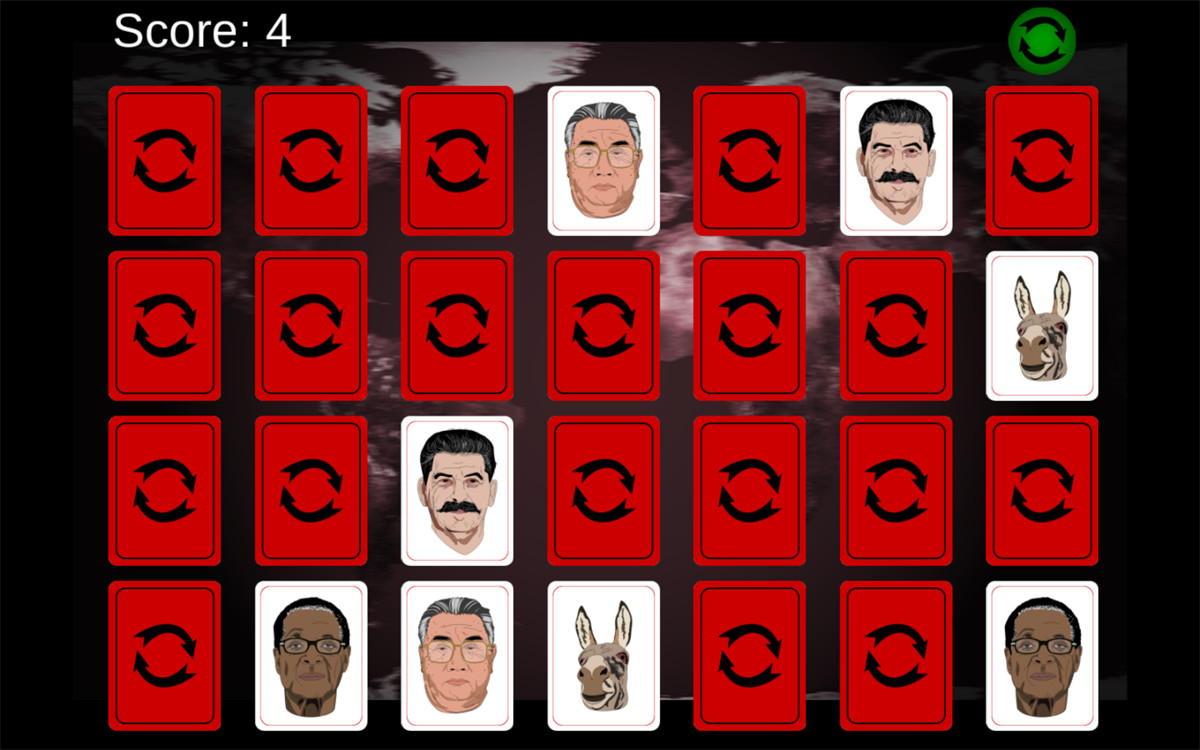Archive for the ‘Online Game’ Category
NEGOCIO at Centro Cultural Las Cigarreras de Alicante
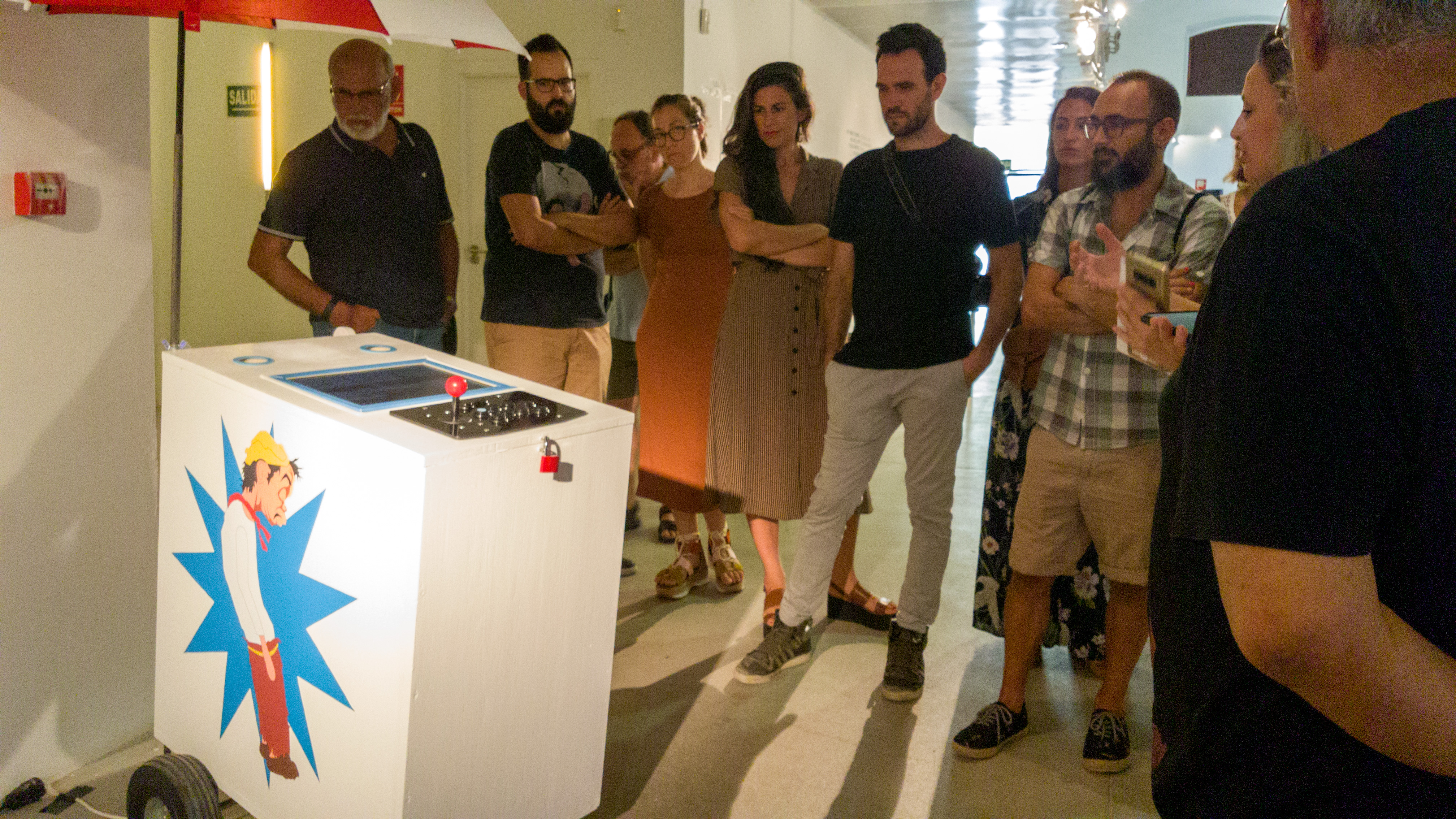
NEGOCIO at el Centro Cultural Las Cigarreras de Alicante is an ambitious attempt to present an archive of the creation of games as art largely over the last twenty years, though one work – “White Chess” by Yoko Ono dates back to 1966. The majority of works have been created in the 21st century. The exhibition presents a mix of digital and analog games and the vast majority of the exhibition is interactive – allowing visitors to play the games on exhibit as intended by the artists.
I’ve been honored with the inclusion of VAGAMUNDO: A Migrant’s Tale (2002) included the exhibition (pictured above). This is a sculpture and video game originally presented on the street that unfortunately is as timely today as 16 years ago due to the Trump administration’s stance regarding immigration.
The curators – David Machado Gutierrez, Alba Garcia Martinez, Beatriz Martinez-Villagrasa and Miguel Soria Andurell state:
The origin of the game, is lost in the memory of time; the game is perhaps as old as the very existence of the human being on earth. But what does the game transmit to us today apart from its playful appearance? Can art use it as a tool that reflects on challenges and social reality? Does it also work as an act of criticism? This exhibition does not pretend not to answer these questions, since it would be too ambitious, but it is formulated so that the spectator participates and, using the works of art as a guide. The exhibition investigates in the multiple planes what may unfolds in games as art.
Below are a selection of photographs documenting the exhibition.
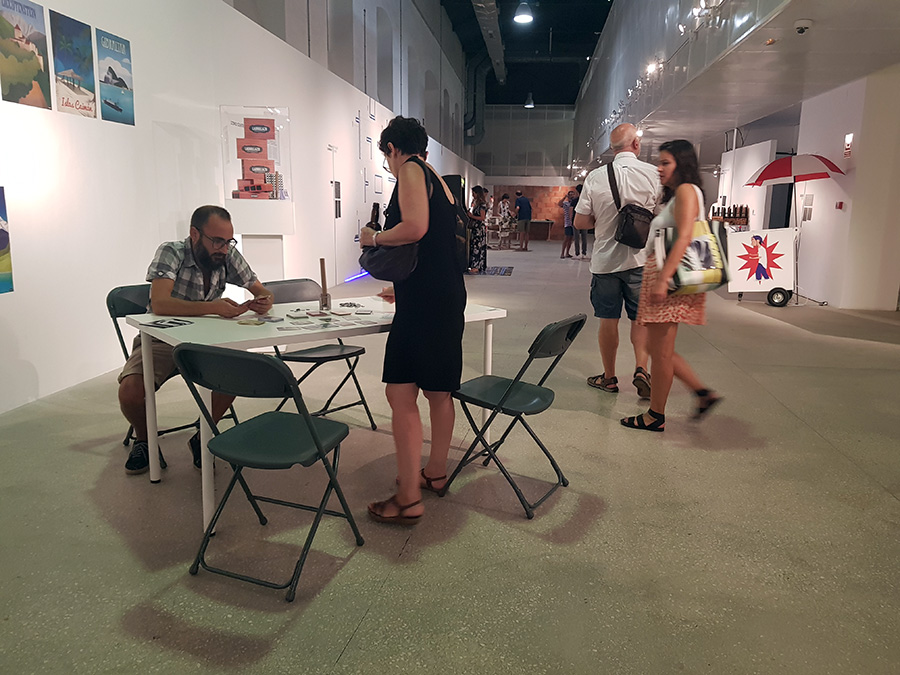
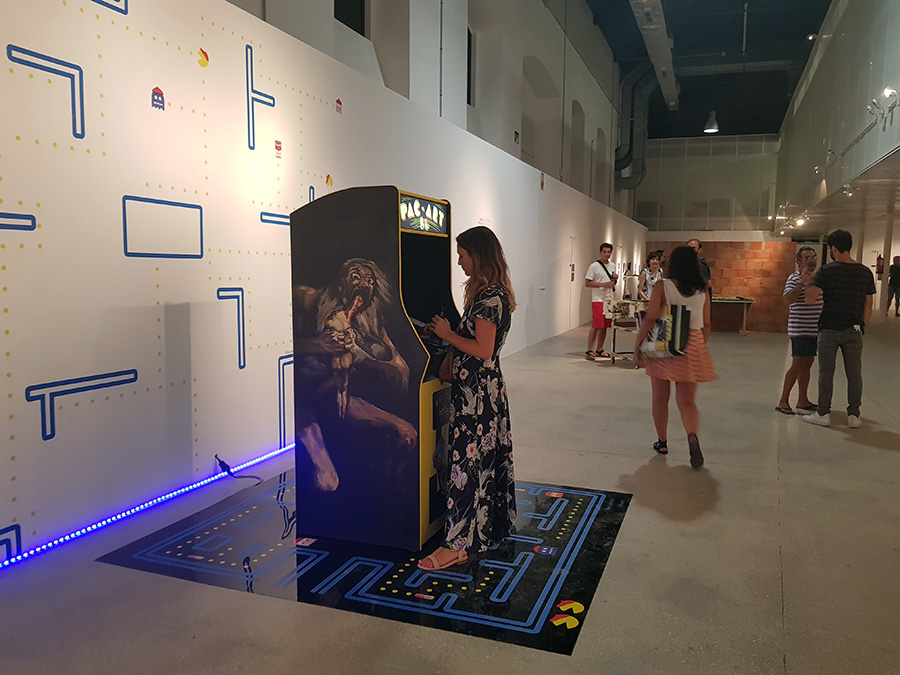
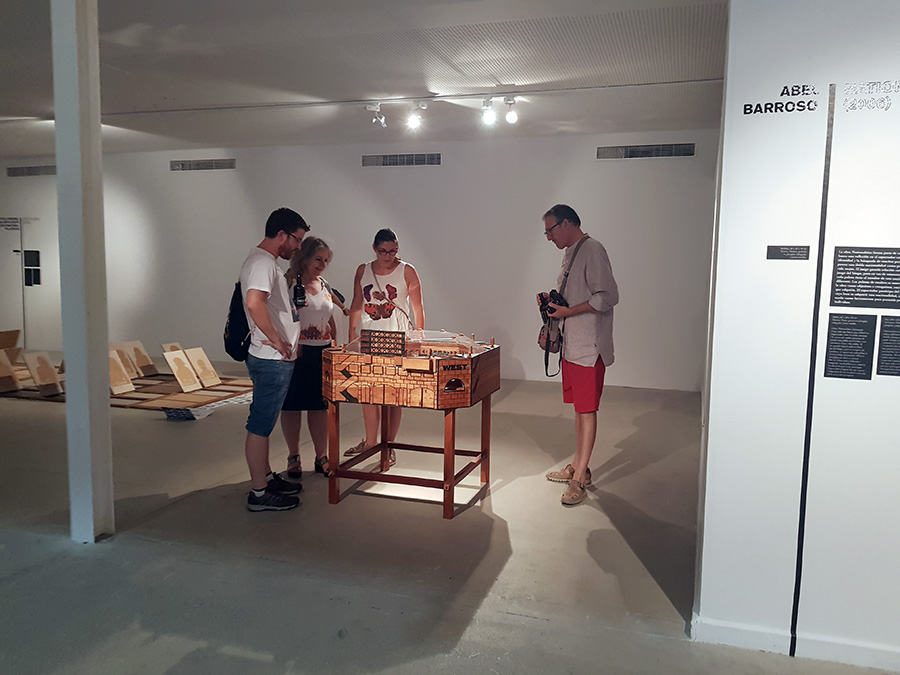
Two game sculptures by Cuban artist Abel Barroso
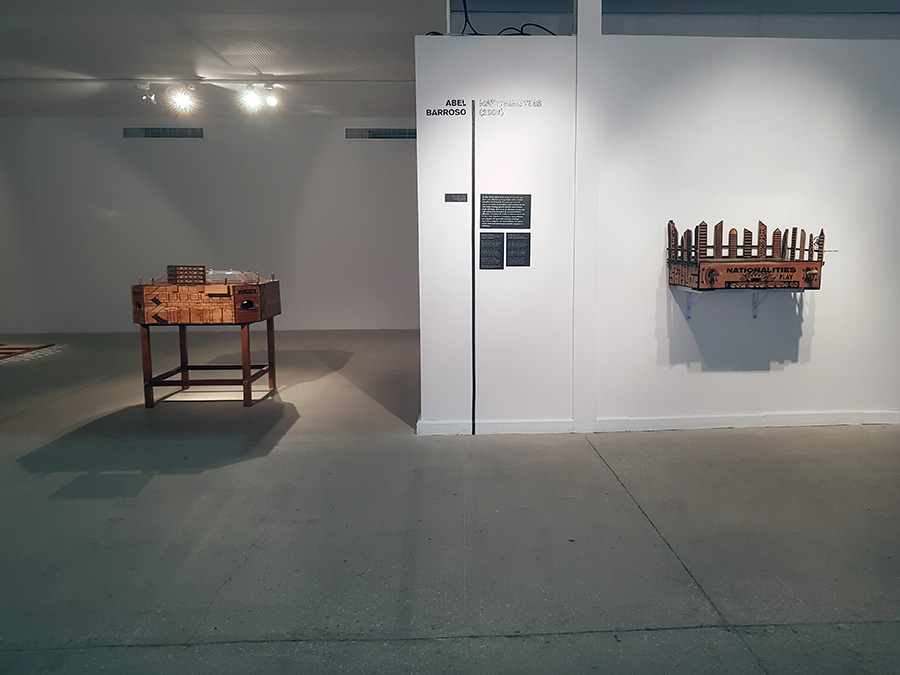
Carlos No’s Intifada – a “ping-pong table which, in place of a net, has been divided into two halves by a very high brick wall, topped by barbed wire that heightens a feeling of insurmountabilty. There arises in the spectator the curiosity of seeing the other side, the place which one is forbidden to see and be in, as if one had discovered Lewis Carrol’s charade in the passage to the other side of the looking-glass. In this wonderland that comprises this side and the other side, both the space and the visitor’s steps are divided into two.”
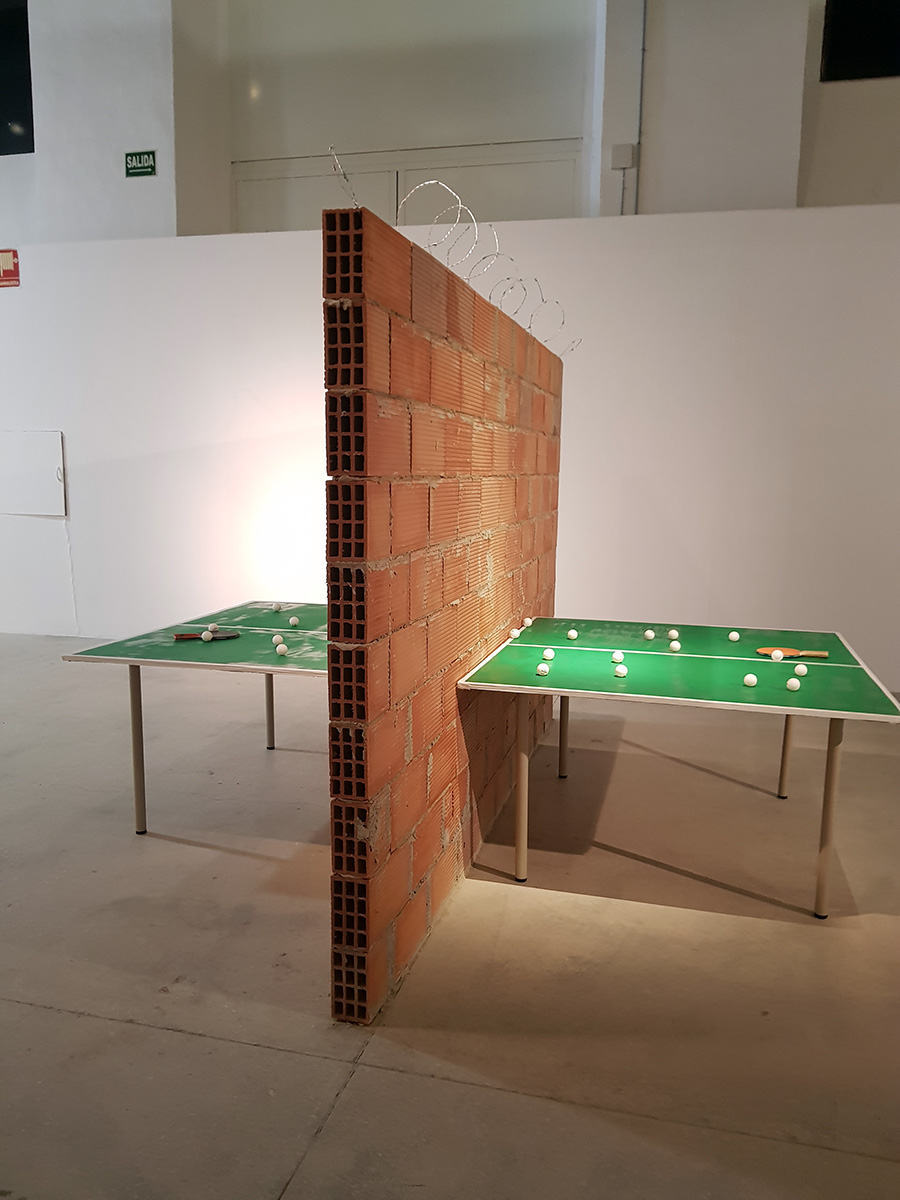
“Velvet-Strike is a mod of the first-person shooter video game Counter-Strike. The mod, developed by Anne-Marie Schleiner, Joan Leandre, and Brody Condon, adds “protest sprays” to the game’s existing graffiti function.”
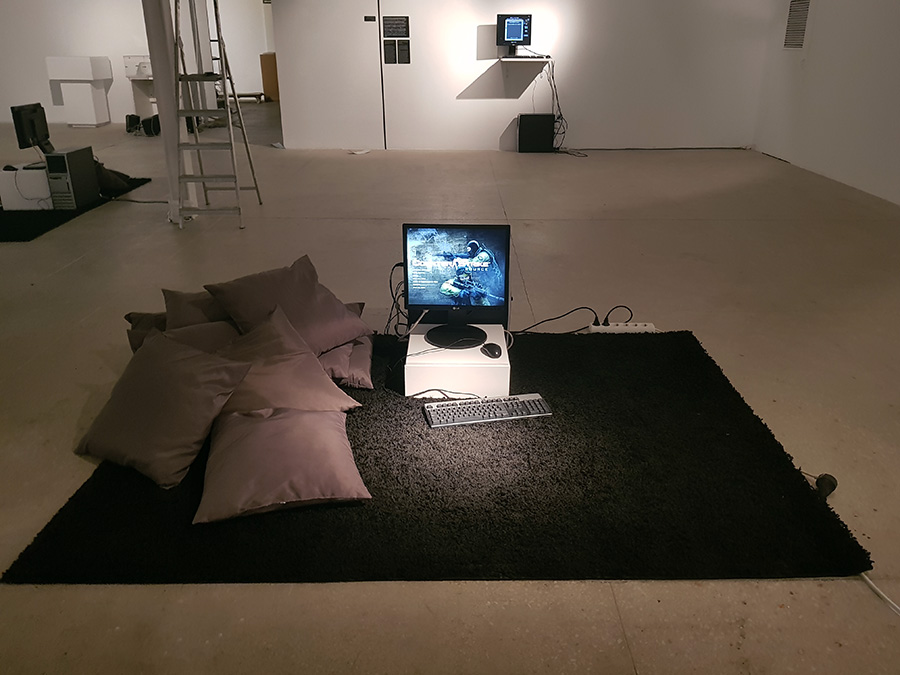
“Ladrillazo is a historical game that takes you to the real estate bubble of the first decade of the 21st century. There were days of wine and roses, an interpretation center in each town, an airport in each city, mortgages at 40 years, masons with minister salaries, Olympic dreams, AVEs and golf resorts.”
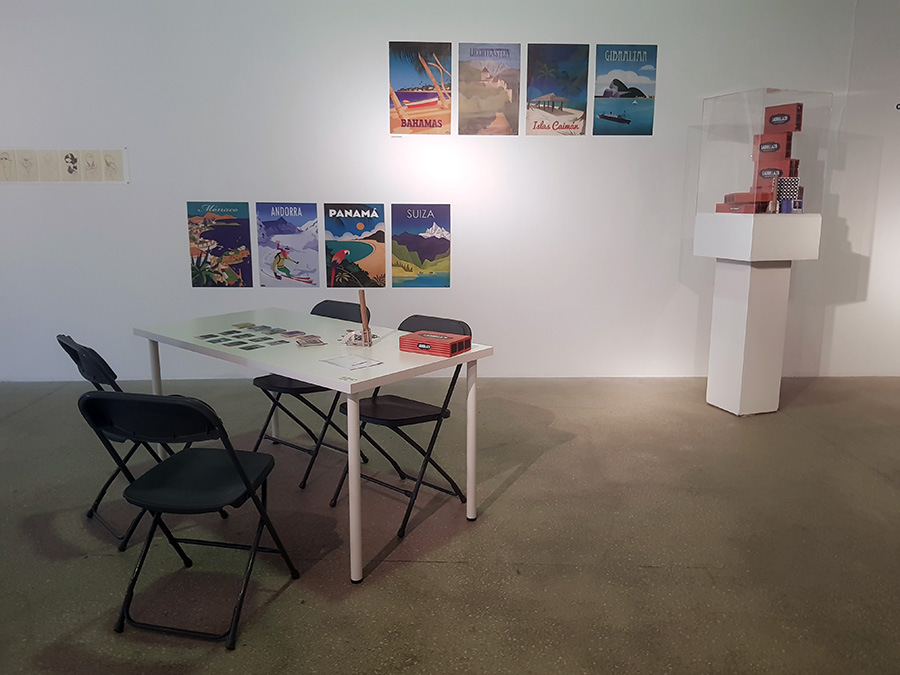
“Pac-Art is a version of the immensely popular Arcade video game Pac-Man. In this case, Pac-Art has transformed Pac-Man into an artist who has to devour famous works of art and flee from ghost-artists who threaten him.”
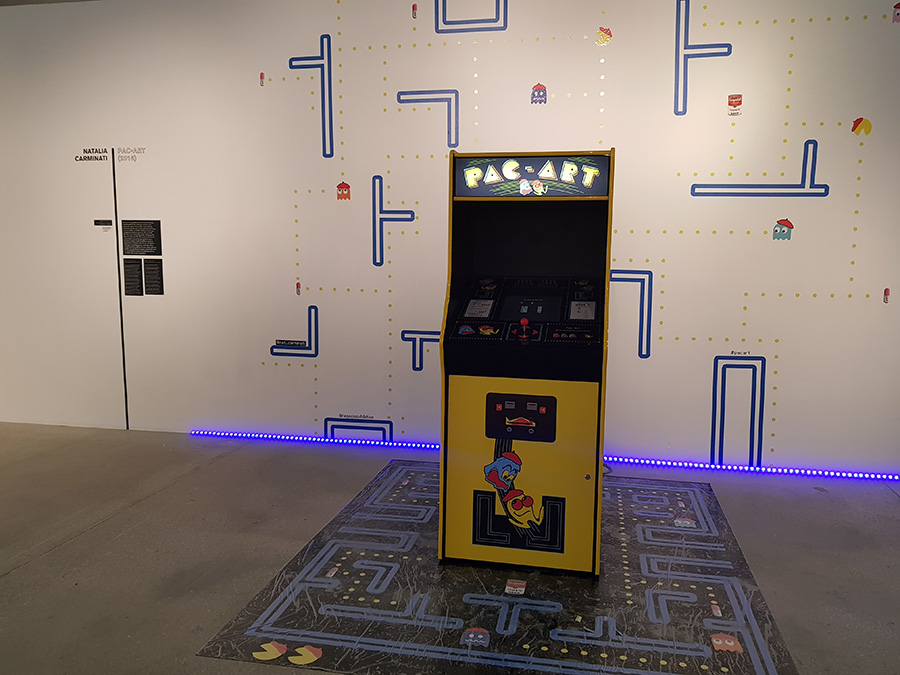
Ravalpoly by Alba Refulgente – a game of real estate speculation in Barcelona that re-contextualizes the game Monopoly.
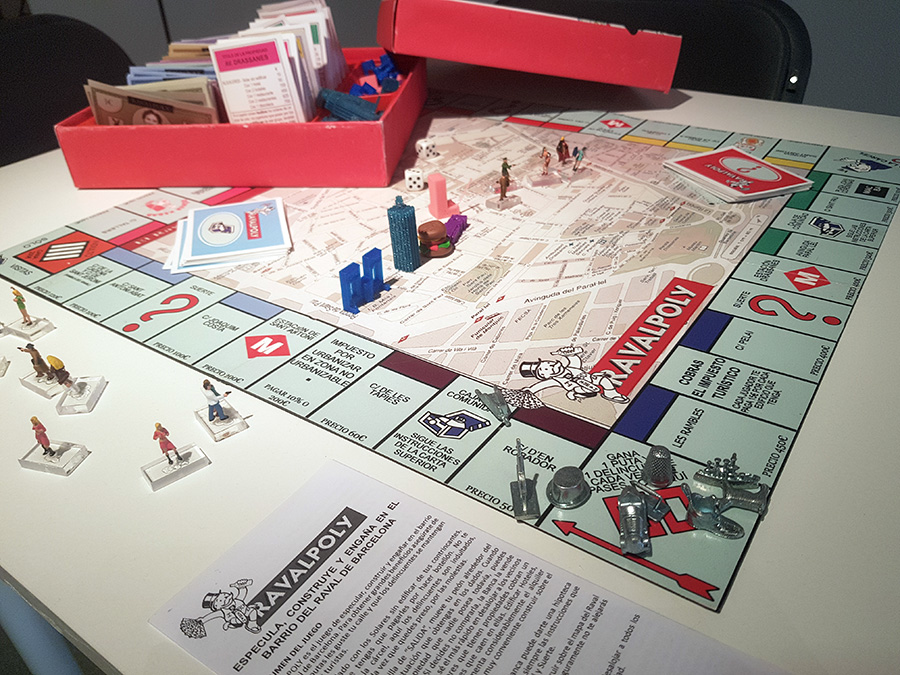
Visitors will have the opportunity to play Yoko Ono’s “White Chess.”
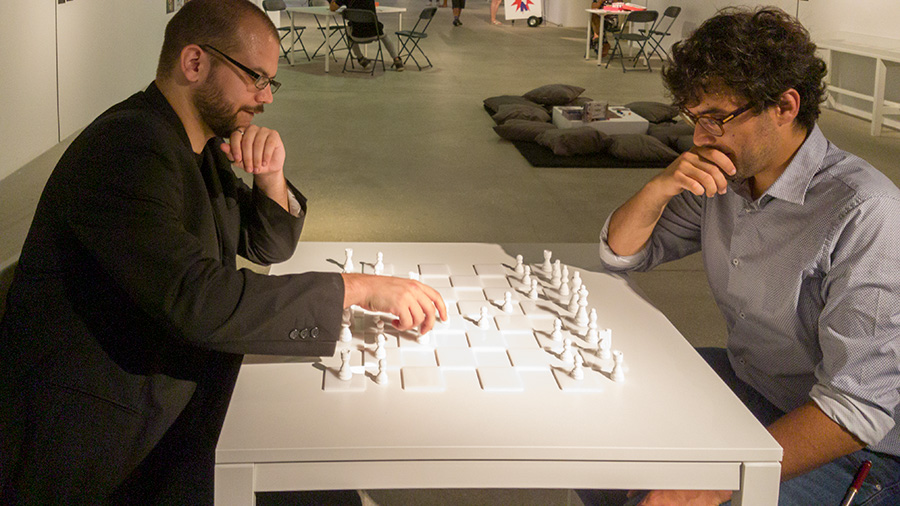
Many other artists and game makers are included in this exhibition, including Brenda Romero, Connor Monahan, Molleindustria, Richard Hofmeier, Jason Rohrer, Joan Priego amongst others. And one more image of VAGAMUNDO:
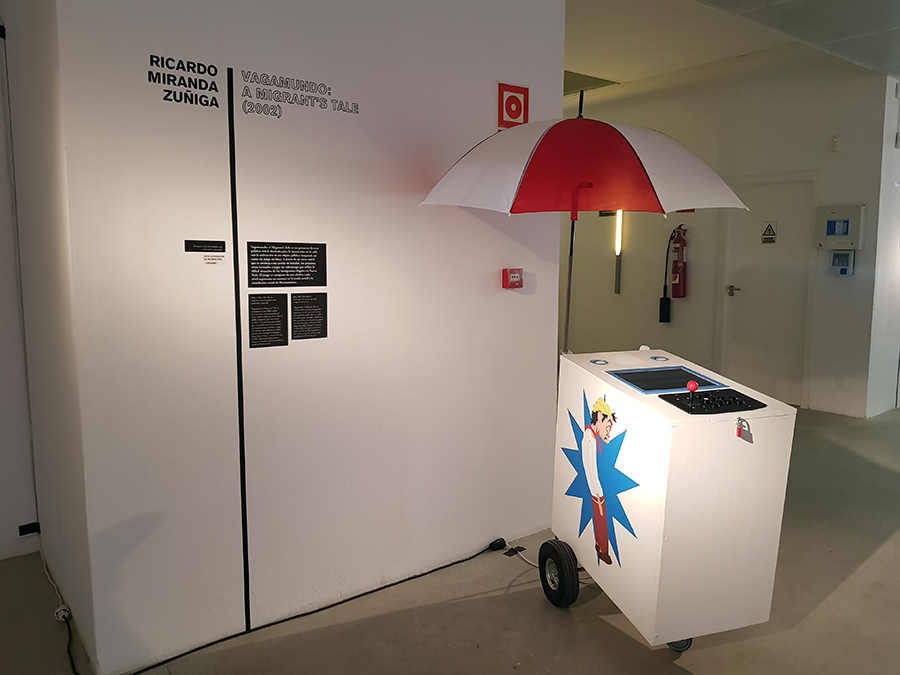
From Minecraft to Fortnite: The Common Language of Video Games
I grew up between the United States and Nicaragua – the school year in the U.S. and summers in Nicaragua. In the 80s, I would bring my cousins packs of blank tapes and a selection of my favorite tapes so that we could make mix tapes. I would also bring old toys, such as my Intellivision game system with all it’s games (where it got an extra 6+ years of play).
I recall one summer leaving The Who’s “The Kids Are All Right” tape because one of my younger cousins – Oscar absolutely loved it. When I returned the next summer, Oscar could sin every song on that tape perfectly. I was floored! Oscar was young as he was born in 1976 and this is the mid 80s – sometime between 1984 and 1987, so at most he was 11 years old (I am five years older than Oscar). He had never taken an English class and yet, there he was signing perfect renditions of “My Generation,” “Happy Jack” and “Pinball Wizard“. Oscar has never lived in an English speaking country and he never attended an English speaking school, however today his English is amongst the strongest of those cousins who have remained in Nicaragua. For nearly a century now, popular culture has been a bridge amongst people divided by distance. Oscar and I continued for years asking one another what we are listening to and playing upon seeing each other. Music and video games are a common language that we share.
In 2015, I travelled to Nicaragua with my 7 year old – Iggy as my mom wanted to spend Christmas and New Years in her native country amongst her siblings. I have spoken in Spanish to Iggy since day one, but I have not forced him to use it – a big mistake. He understands Spanish very well, but he is not comfortable speaking it. Although Iggy has many second cousins in Nicaragua who are bilingual, the one cousin that is the same age, does not attend a bilingual school and does not speak English, so I wondered how they would get along. Of course, they are kids and speak the universal language of play, so after a brief awkward period of silence and observation they engage. They both play soccer and and are competitive about it. The ball and the grass were instantly a common space as was a mutual admiration for Messi, Barcelona and La Liga.
Tired and sweaty they sought reprieve from the sun indoors where I discovered another common space – Minecraft. This I did not expect. I knew that Minecraft was huge amongst 7 year olds in the States, but I did not consider its global reach. Once I set my kid’s device to my cousin’s wifi, it only took them a minute to start playing together on a local area network. And there they were, sitting next to one another, interfacing through a screen, laughing, teaching each other skills, trading devices, building structures, killing zombies and doing whatever else one does in Minecraft. Eventually, they needed to be cut off, but common languages and happy bonds were established.
A couple weeks later, we all went to see “The Force Awakens” and another common bond was established. As the boys went on and on about the movie, my cousin and I recalled our mutual love for “Return of the Jedi” – another soundtrack that I had left with him back in the early 80s. We both loved that celebratory Ewok “Yub Nub” song!
It is summer 2018 and due to the murders committed by Ortega and his regime following April protests against the pilfering of Nicaragua’s social security by the Ortegas, many of my cousins’ kids are States-side. Once again my son Iggy, now 10 years old was about to meet two cousins who do not speak English – the twins Franco and Diego who are 12 years old. And again, I wondered how they’d communicate and get along. A brief awkward period of observation and listening soon became play.
My son had just received a drone from his grandmother for his birthday. He pulled it out, walked his cousins through the interface and they took turns flying the drone around the living room. As the adults sat at the table in conversation, the twins’ mother lamented about how many hours she allows them to play video games as she doesn’t have a car or is comfortable using public transportation. Then Franco chimed in on how much they love Fortnite and immediately Iggy started telling them about what level he’s at, his favorite weapons, number of kills and favorite dances… Soon the three were sharing two devices and playing as a team. And yes, they needed to be cut off and pulled away from the devices, but the ice was broken and they spent the rest of the day playing and interacting device free.
It’s been over 35 years since I taught my cousins how to use the Intellivision controllers and play games like Pitfall, Nightstalker and Utopia. Today the interfaces are much more intuitive and it’s pointless to make any comparison regarding the graphics, but video games are a global language amongst children and it’s always surprising to me how some titles cross all cultural differences to establish common environments of virtual play and exchange.
Amnesia – a Card Matching Game
I’m currently teaching myself Unity by reading through Unity in Action and as an initial finished project, I’ve built a card matching game that is covered in the fourth chapter of this book. I decided to utilize the dictator portraits that I’ve been creating for a print and animation series titled “Drunk with Power”. The game is available online, so test your memory by matching the 14 dictators illustrated onto the cards in the game “Amnesia”. In case you are not able to identify some of the portraits and would like to know who they are, the illustrated dictators are: Somoza, Ortega, Stalin, Putin, Idris, Gaddafi, Batista, Castro, Smith, Mugabe, Hirohito, Kim Il-sung, the GOP and the Dems.
I could not not include the United States of America. By placing the mascots of the U.S. Democratic and Republican parties amongst the portraits of Latin American, Soviet, African, Middle Eastern and East Asian dictators, the viewer is asked to question the concentration of political power within only two political parties and the ideologies that they expound. Excluded from power are any third parties and alternative political views or social movements. Through the recent victory of Citizens United (2010), the concentration of power has been fortified by unlimited corporate spending on political campaigns to influence elections. The passing of this Constitutional law is akin to the oligarchies represented by the rest of the portraits. Just as with the countries controlled by the depicted dictators, the United States is not a democracy. Play “Amnesia”! (The portraits look a lot better when played full-screen.)
